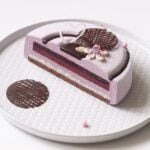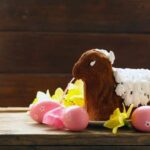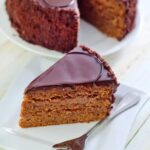Are you looking to elevate your cake decorating skills? Look no further. In this article, we will delve into the art of buttercream decorating and provide you with a step-by-step guide on how to make buttercream for decorating cakes. Whether you’re a novice baker or an experienced one looking to refine your techniques, mastering the art of buttercream decoration is essential for creating stunning and delicious desserts.
Buttercream frosting is a versatile and delicious option for decorating cakes, cupcakes, and other baked treats. It’s smooth, creamy texture makes it easy to work with, allowing for endless possibilities when it comes to creating beautiful designs and patterns. Understanding the basics of buttercream frosting is crucial in achieving the perfect consistency for spreading and piping onto your confections.
In this article, we’ll explore the essential ingredients needed to make buttercream frosting, as well as provide you with a detailed step-by-step guide on how to achieve that perfect, velvety texture. Additionally, we’ll discuss flavor boosters that can take your buttercream to the next level and share valuable tips for achieving the right consistency for your decorating needs. So grab your spatula and piping bags – it’s time to master the art of buttercream decoration.
The Basics
Buttercream frosting is a versatile and delicious option for decorating cakes. It’s smooth, rich, and creamy, making it the perfect canvas for creating stunning cake decorations. Understanding the basics of buttercream is essential for anyone looking to elevate their cake decorating skills.
When it comes to buttercream, there are several types to choose from, including American buttercream, Swiss meringue buttercream, and Italian meringue buttercream. Each type has its own unique texture and flavor profile, so it’s important to understand the differences before getting started.
To make a basic American buttercream, you will need just a few ingredients: unsalted butter, confectioners’ sugar (also known as powdered sugar), vanilla extract, and heavy cream or milk. These simple ingredients come together to create a smooth and creamy frosting that pairs well with a variety of cake flavors.
To understand the basics of buttercream frosting, it’s important to know that the ratio of butter to sugar is crucial in achieving the right texture and flavor. Too much sugar can result in a gritty frosting, while too little can lead to a runny consistency. Finding the perfect balance is key to creating a delicious and spreadable frosting for your cakes.
- American Buttercream
- Swiss Meringue Buttercream
- Italian Meringue Buttercream
Order Ingredients:
- Unsalted Butter
- Confectioners’ Sugar
- Vanilla Extract
- Heavy Cream or Milk
Essential Ingredients
When it comes to making buttercream for decorating cakes, the essential ingredients play a crucial role in achieving the perfect taste and texture. The primary components of buttercream frosting include butter, sugar, and a liquid such as milk or cream. It is important to use high-quality unsalted butter to ensure the best flavor and smooth consistency. The ratio of butter to sugar is also key, as it will determine the sweetness and stability of the frosting.
In addition to butter and sugar, other essential ingredients for making buttercream include vanilla extract or other flavorings, as well as a pinch of salt to enhance the overall taste. When choosing your ingredients, opt for pure vanilla extract instead of imitation for a more authentic flavor. It’s also important to sift the confectioners’ sugar before adding it to the butter for a smoother texture.
Another vital ingredient in buttercream frosting is a liquid component such as milk or heavy cream. This helps achieve the desired consistency and makes the frosting easier to spread or pipe onto cakes. Adding too much liquid can result in a runny texture, while using too little can make the frosting too stiff. Achieving the right balance is crucial when it comes to creating perfect buttercream for decorating cakes.
| Buttercream Ingredient | Importance |
|---|---|
| Unsalted Butter | Ensures best flavor and smooth consistency |
| Vanilla Extract or other flavorings | Enhances overall taste |
| Confectioners’ Sugar | Sifted for smoother texture |
Step-by-Step Guide
Making the perfect buttercream for cake decorating is essential in achieving professional-looking results. Buttercream not only acts as a delicious filling and frosting for cakes but also serves as the base for various decorating techniques such as piping, spreading, and even creating intricate designs. To ensure that your buttercream is smooth, creamy, and easy to work with, follow this step-by-step guide to making the perfect buttercream.
First, start with room temperature unsalted butter to achieve the ideal consistency. Beat the butter in a stand mixer or with a handheld mixer until it becomes pale and fluffy. This step is crucial in creating a light and airy texture for your buttercream.
Next, gradually add confectioners’ sugar to the whipped butter, while continuing to mix at medium speed. The sugar helps sweeten the buttercream while also thickening it to the desired consistency.
Finally, add a small amount of heavy cream or milk to the mixture to achieve a smooth and spreadable texture. It’s important not to add too much liquid at once which can result in a runny buttercream. Instead, add the liquid gradually until you reach your desired consistency.
| Ingredient | Amount |
|---|---|
| Unsalted Butter | 1 cup (2 sticks) |
| Confectioners’ Sugar | 4 cups |
| Heavy Cream or Milk | 2-4 tablespoons |
Flavor Boosters
When it comes to decorating cakes with buttercream, adding flavor is just as important as achieving the perfect consistency. There are various ways to enhance the taste of your buttercream frosting, and one of the easiest methods is by incorporating extracts and flavors. Here are some popular flavor boosters to consider when making buttercream for decorating cakes:
- Vanilla extract: Vanilla is a classic flavor that complements almost any type of cake. A teaspoon or two of vanilla extract can add a subtle sweetness and aroma to your buttercream.
- Almond extract: For a nutty and slightly sweet flavor, almond extract is a fantastic option. Just a small amount can give your buttercream a unique and delicious taste.
- Citrus zest: Adding freshly grated lemon, orange, or lime zest to your buttercream can provide a bright and refreshing burst of citrus flavor. It pairs especially well with light, fruity cakes.
In addition to extracts, there are other creative ways to infuse flavor into your buttercream frosting. Consider incorporating flavored syrups, such as caramel or chocolate, for an extra dimension of taste. You can also experiment with different types of spices like cinnamon or nutmeg for a more complex flavor profile.
Overall, incorporating extracts and flavors into your buttercream frosting allows you to customize the taste of your cakes according to your preferences and the occasion. Whether you prefer traditional vanilla or want to try something more adventurous like espresso or coconut, adding these flavor boosters will elevate your cake decorating game and impress anyone who takes a bite.
Tips for Achieving the Right Consistency
Room Temperature Ingredients
One of the key tips for achieving the right consistency in your buttercream frosting is to use room temperature ingredients. Room temperature butter and cream will mix together more easily, resulting in a smoother and more consistent texture. If your ingredients are too cold, they can result in a lumpy or uneven frosting, making it difficult to spread or pipe onto your cake.
Add Liquid in Small Increments
When adjusting the consistency of your buttercream frosting, especially if you need to make it thinner, it’s crucial to add liquid such as milk or heavy cream in small increments. This way, you can control the consistency without making the frosting too runny. Start with adding 1 tablespoon of liquid at a time and mix thoroughly before deciding whether you need to add more.
Adjusting With Additional Powdered Sugar
On the other hand, if your buttercream is too thin and needs to be thickened, you can do so by gradually adding powdered sugar until you reach the desired consistency. Keep in mind that adding more powdered sugar will also increase the sweetness of the frosting, so taste as you go and adjust accordingly. Be patient when making these adjustments to avoid over-correcting and ending up with an overly sweet or stiff buttercream.
Decorating Techniques
Mastering Piping
One of the most popular buttercream decorating techniques is piping. This involves using a pastry bag and various tips to create different designs on the cake. To master piping, it’s important to start with the right consistency of buttercream – not too stiff and not too runny.
Practice different pressure and speed when piping to achieve different results. For beginners, it’s best to start with simple designs such as rosettes, stars, or dots before moving on to more complex designs.
Perfecting Spreading
Spreading buttercream onto a cake may seem easy, but achieving a smooth and even finish can be a bit tricky. To perfect spreading, first ensure that your cake layers are level and have been properly crumb-coated. Use an offset spatula for applying buttercream in thin layers, then use a bench scraper for smoothing out the surface. Taking your time and working in small sections will help you achieve a professional-looking finish.
Other Decorative Techniques
Aside from piping and spreading, there are other buttercream decorating techniques that can add visual appeal to your cakes. These include using stencils to dust patterns onto the cake’s surface, creating textured finishes with palette knives or combs, as well as using edible decorations like sprinkles or edible pearls to add extra flair. Experiment with different techniques to find what works best for your cake decorating style.
Learning how to pipe, spread, and utilize other decorative techniques with buttercream frosting can take your cake decorating skills to the next level. With practice and patience, you’ll be able to create stunning designs that will impress any crowd.
Troubleshooting
Even with the best buttercream recipe and technique, issues can arise when decorating cakes. One common problem is grainy or lumpy buttercream. This can occur if the butter isn’t softened enough before mixing or if the sugar is added too quickly. To fix this issue, try beating the buttercream for a few more minutes to smooth out any lumps. If that doesn’t work, you can also strain the buttercream through a fine mesh sieve to remove any lumps.
Another issue that cake decorators often encounter is air bubbles in the buttercream. When air becomes trapped in the frosting during mixing, it can create tiny bubbles that affect the smoothness of your decorations.
To prevent this, make sure to mix the buttercream on low speed and scrape down the sides of the bowl regularly to release any trapped air. If air bubbles are already present in your buttercream, gently tap the bowl on the counter to help them rise to the surface, then use a spatula or toothpick to pop them.
Color fading is another common problem when working with colored buttercream. It’s important to note that some food colors may lighten or change in hue over time, especially when exposed to light and air. To prevent color fading, store colored buttercream in an airtight container away from direct sunlight until ready for use. Additionally, consider using gel food coloring instead of liquid coloring for more vibrant and stable colors in your decorations.
Conclusion
In conclusion, mastering the art of making buttercream for decorating cakes requires an understanding of the basics, essential ingredients, and step-by-step techniques. With the right knowledge and practice, anyone can create stunning cake decorations that will impress friends and family.
It’s important to remember that the key to perfect buttercream lies in using high-quality ingredients and following the recipe carefully. Additionally, adding flavor boosters and achieving the right consistency are crucial steps in creating delicious and visually appealing decorations for your cakes.
By familiarizing yourself with different decorating techniques and being prepared to troubleshoot common issues, you can elevate your cake decorating skills to new heights. Whether you’re piping flowers or spreading a smooth layer of buttercream, the possibilities for creativity are endless once you’ve mastered the art of buttercream decoration. So roll up your sleeves, gather your ingredients, and start practicing – soon enough, you’ll be wowing everyone with your stunning cake creations.
Frequently Asked Questions
Which Buttercream Is Best for Decorating a Cake?
The best buttercream for decorating a cake is American buttercream. This type of frosting is easy to work with, holds its shape well, and is perfect for piping borders, flowers, and other decorative elements on cakes. It’s made from butter, powdered sugar, vanilla extract, and a bit of milk or cream to reach the desired consistency.
How Do You Make Buttercream Thicker for Piping?
To make buttercream thicker for piping, you can simply add more powdered sugar. Gradually mix in small amounts of powdered sugar until the buttercream reaches the desired thickness. You can also chill it in the refrigerator for a short time to firm it up before using it for piping.
What Is the Best Frosting for Decorating Cakes?
When it comes to the best frosting for decorating cakes, it ultimately depends on personal preference and the specific design or technique being used. However, Swiss meringue buttercream is often considered one of the best frostings for decorating due to its smooth texture, ability to hold intricate designs, and versatility in flavoring and coloring.
It requires a bit more effort to make than American buttercream but yields great results for decorating cakes.

Welcome to my blog about home and family. This blog is a place where I will share my thoughts, ideas, and experiences related to these important topics. I am a stay-at-home mom with two young children. I hope you enjoy reading it! and may find some helpful tips and ideas that will make your home and family life even better!





